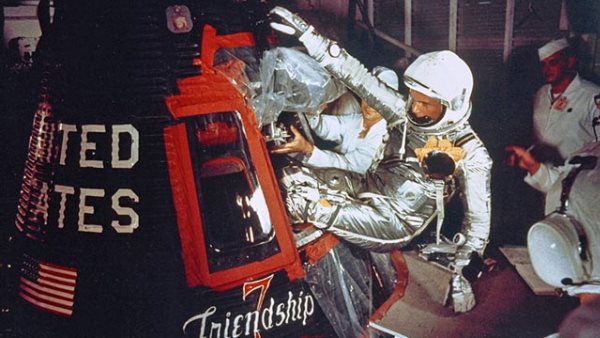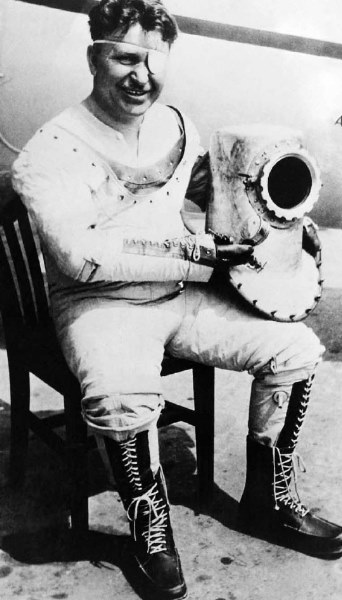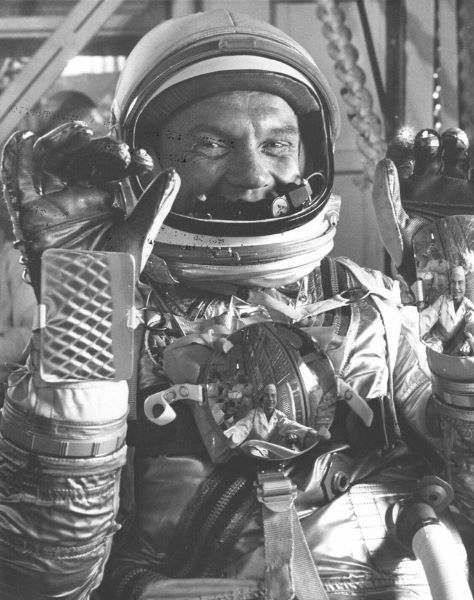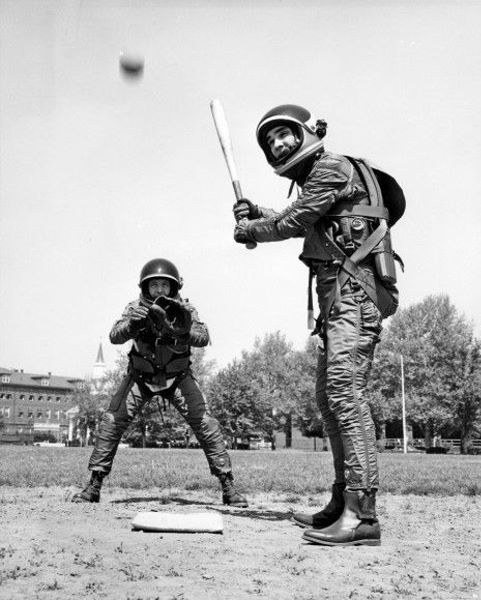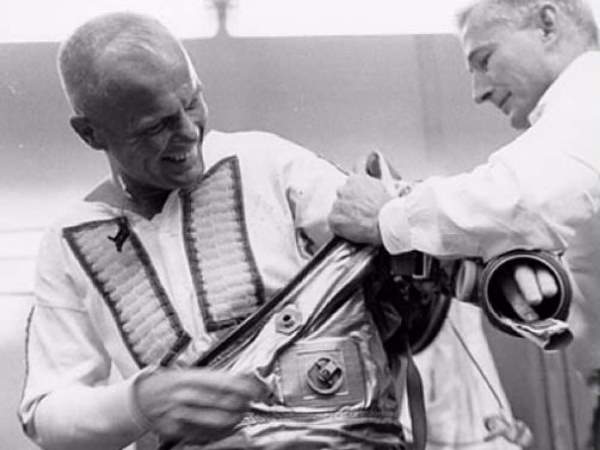
by Gwyn Conaway
I have noticed trends swinging wildly these past few months. Shapes, colors, and patterns that we’ve rarely seen in the past are appearing in advertisements and our favorite magazines. We are in a transition phase, ladies and gentlemen.
Behind us, the Golden Age of the fifties is rosy and romantic, a time of economic surplus and increasing leisure. I see this past decade as the slow climb of a roller coaster. With John Glenn’s successful Mercury-Atlas 6 spaceflight just months behind us, I realize now that his success marks the top of the roller coaster’s first hill. We’re now looking down at a twisting, speeding track. It’s the sixties, and I can tell it’s going to be a wild ride.

A recent episode of The Twilight Zone entitled ‘I Sing the Body Electric’ sparked my clarity on the subject of fashions heading our way these next several years. It was the show’s one-hundredth episode, written by Ray Bradbury. A widowed father fears that his children don’t have the motherly guidance they need, and so purchases a made-to-order robot grandmother to care for them. Although his eldest daughter, Anne, is angry that her real mother died, she eventually sees Grandmother as a part of the family. Once the children have grown up, Grandmother returns to her manufacturer to be disassembled and await the next family.
This particular episode struck me in a way others have not. The costume design, which complements the script beautifully, communicates a future in fashion and popular mindset that is both exciting and chilling. It speaks of our scientific euphoria, but also our fears in embracing such an utopia.
Our optimism toward science and the future is evident in the costumes. The entire main cast wears grid-like stripes, plaids, and other formulaic patterns rather than organic motifs such as florals. Only when the children grow up and truly see Grandmother as a family member, do these regimented patterns disappear.

(From left to right) Karen, Anne, and Tom discuss purchasing a robot grandmother.
Note the siblings in the photograph above. Karen and Tom wear windowpane and plaid, respectively. Anne, the most hesitant of the three to adopt the ideas in their Modern Science magazine, wears bows on her dress, but even these organic motifs are arranged in a grid.
I opened my copies of Montgomery Ward from 1959 and this year’s most recent issue of Lana Lobell for comparison. Just two and a half years ago, young women wore romantically arranged florals that took up the entire cloth. This year, however, we see the same motifs separated into sparse patterns and parallel lines.

The Montgomery Ward versus the Lana Lobell fashions of the past few years. This subtle change in pattern arrangement marks the beginning of a new era.
One could say this is simply an evolution of aesthetic; reinventing established symbols for the next era. However, I postulate that this shift is indicative of a larger change coming our way. Younger generations have begun to protect themselves against a larger, more dangerous world. Where before our florals were a ‘garden’ upon the cloth, now they’re sparsely placed single blooms. We’re stepping away from such romanticism in favor of arming ourselves with both excitement and fear of the future.
Let us return to the episode to explore this more technologically-driven aesthetic. The company Fascimile offers the children many physical options for creating their perfect caregiver. Unquestionably the most provocative scene of the story, I was struck by the realization that we no longer romanticize a balance of leisure, work, and home in the way of the fifties. Rather, we view our lives and bodies as the canvas of modernism. We are beginning to package ourselves as a certain model of person.

These ensembles are decorated in this year’s latest floral motifs and stripes. The Fascimile salesman offers a wide selection of parts to build your perfect caregiver. From eye color to hair style, fashion to height, voice to sturdiness, the choice is yours!
In fact, the renewed popularity of square patterns, such as windowpane and plaid, can be definitively linked to the way in which our workplaces and homes are changing. As computing systems become more pervasive, the rooms in which we work become more ‘square’ as well. Offices and homes are becoming sleek, plastic, metallic, rubberized.
In ‘I Sing the Body Electric,’ we can see this relationship emerging. Perhaps the most interesting ensemble of the episode is the dress Grandmother wears during the climax of the story. It’s vertical lines trapped in neat horizontal rows reminded me immediately of the first integrated circuit created by Jack Kilby in 1958. These circuits, I’m told, are now being used in large computing machines, such as the IBM 7030. The IBM 7030 also arranges its various compartments in rows of vertical towers.

Grandmother’s dress compared to the IBM 7030 (top) and Kilby’s circuit (bottom). Note that even Grandmother’s belt maintains the horizontal rows of vertical lines.
But couldn’t this be a pattern only within this episode of The Twilight Zone? I asked myself the same question. I perused my fashion magazines and became excited. Women’s accessories, coats, purses, and clothing are all following this same pattern of evolution when we compare the fashions of just a few years ago to our current season:

While this hat from 1960 (left) is sweeping and sweet, the current fashion of 1962 (right) feels more like a helmet to protect the wearer from the outside world. This is another symbol that both showcases our fear of nuclear war, and our excitement for the future.

Christian Dior swings from a return to the Watteau back, the most romantic of all French Rococo 18th century women’s silhouettes in 1959 (left) to experimenting with the human body as geometric shape in one of his most recent designs of this year (right).

Christian Dior’s 1962 collection continues to push the boundaries of shape. This ensemble mirrors the silhouette of the Mercury-Atlas 6 right down to the flat-top hat. The luscious shine of the coat suggests sleek and minimalist will reign supreme in the coming years.
—
Ray Bradbury’s one-hundredth episode of The Twilight Zone did not disappoint. ‘I Sing the Body Electric’ took me on a whirlwind of a ride. His masterful screenplay helped me see the mouthwatering potential for change in the latter half of our decade. What will more scientific advancement do to our fashion? Will we wear flight suits instead of dresses? Helmets instead of hats? Will we integrate with computing machines in the far future so that we too can be made-to-order?
Young men and women may think they’re buying simple clothes, but in reality, they’re arming themselves for an unpredictable yet invigorating future. They’re setting aside romance in favor of progress.
But who’s to say modeling themselves after computing machines and space capsules isn’t a sort of romance of its own?

